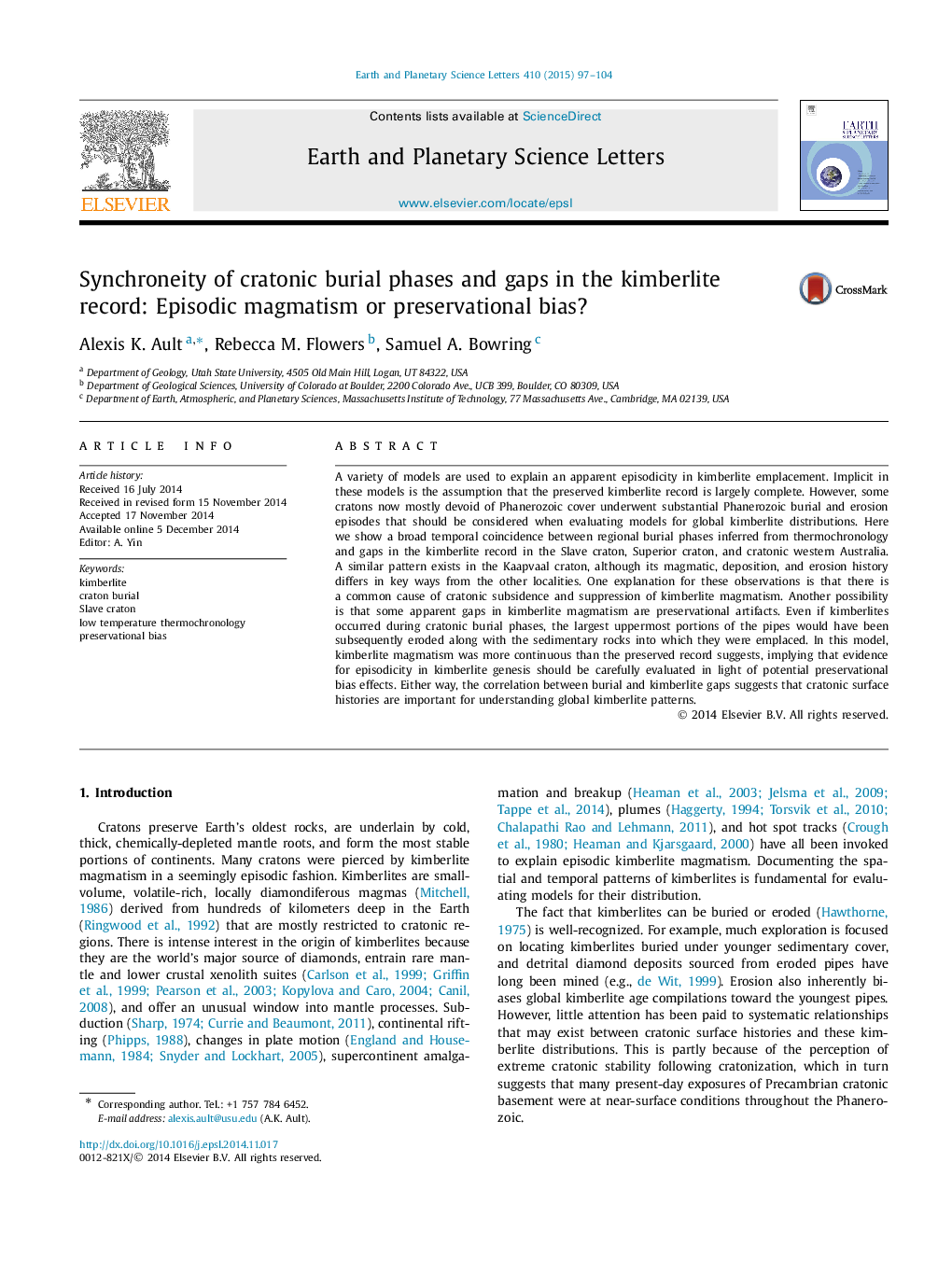| Article ID | Journal | Published Year | Pages | File Type |
|---|---|---|---|---|
| 6428456 | Earth and Planetary Science Letters | 2015 | 8 Pages |
â¢Regional burial phases and gaps in kimberlite record coincide in some cratons.â¢Suggests common cause of cratonic subsidence and kimberlite suppression.â¢Another possibility is that some kimberlite gaps are preservational artifacts.â¢Results are significant for kimberlite geodynamic models and diamond exploration.â¢Cratonic surface histories are important for understanding kimberlite patterns.
A variety of models are used to explain an apparent episodicity in kimberlite emplacement. Implicit in these models is the assumption that the preserved kimberlite record is largely complete. However, some cratons now mostly devoid of Phanerozoic cover underwent substantial Phanerozoic burial and erosion episodes that should be considered when evaluating models for global kimberlite distributions. Here we show a broad temporal coincidence between regional burial phases inferred from thermochronology and gaps in the kimberlite record in the Slave craton, Superior craton, and cratonic western Australia. A similar pattern exists in the Kaapvaal craton, although its magmatic, deposition, and erosion history differs in key ways from the other localities. One explanation for these observations is that there is a common cause of cratonic subsidence and suppression of kimberlite magmatism. Another possibility is that some apparent gaps in kimberlite magmatism are preservational artifacts. Even if kimberlites occurred during cratonic burial phases, the largest uppermost portions of the pipes would have been subsequently eroded along with the sedimentary rocks into which they were emplaced. In this model, kimberlite magmatism was more continuous than the preserved record suggests, implying that evidence for episodicity in kimberlite genesis should be carefully evaluated in light of potential preservational bias effects. Either way, the correlation between burial and kimberlite gaps suggests that cratonic surface histories are important for understanding global kimberlite patterns.
